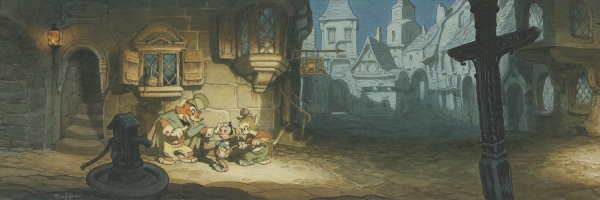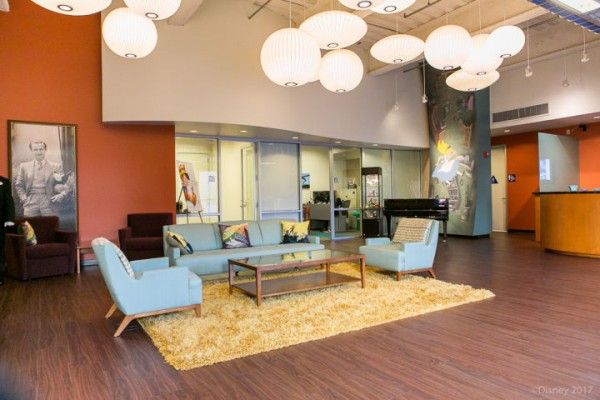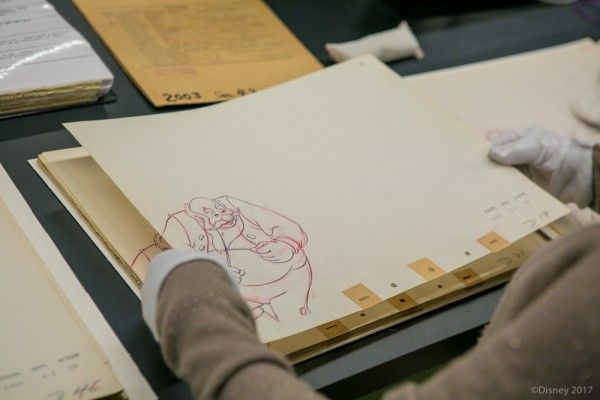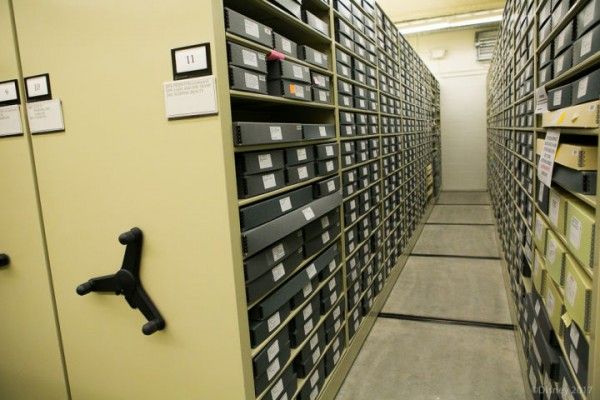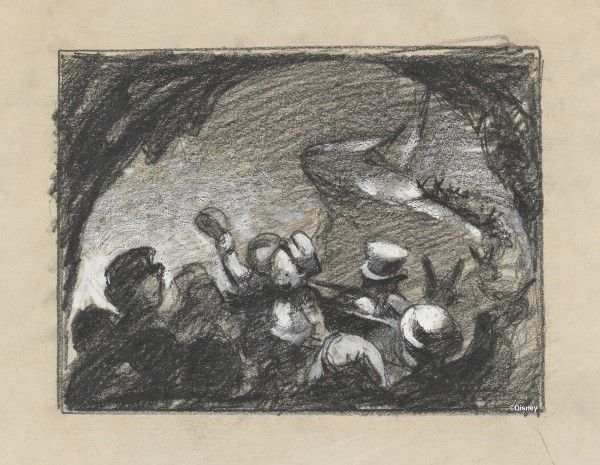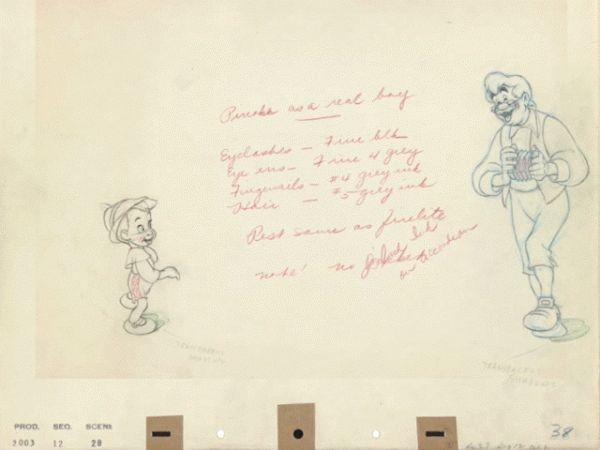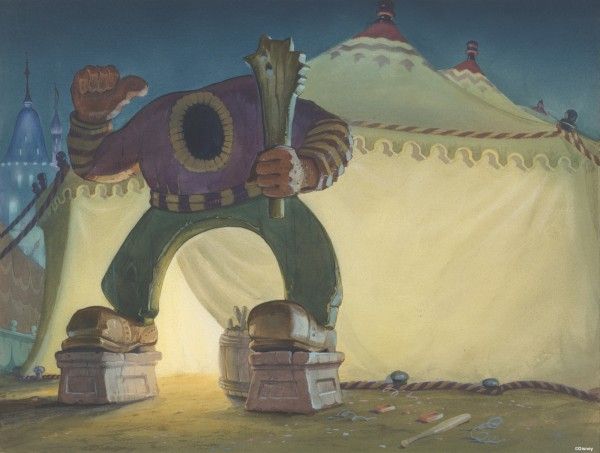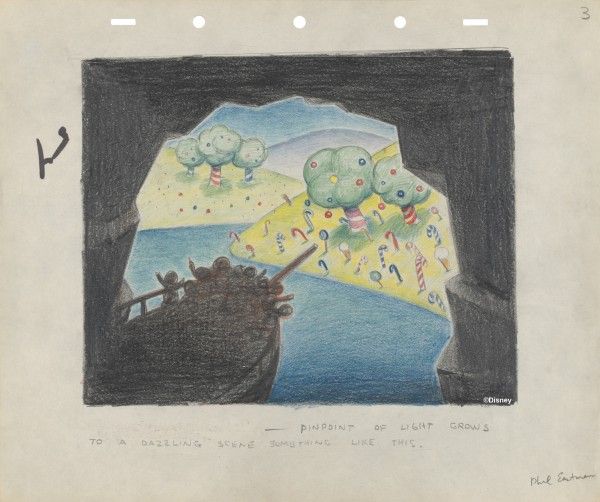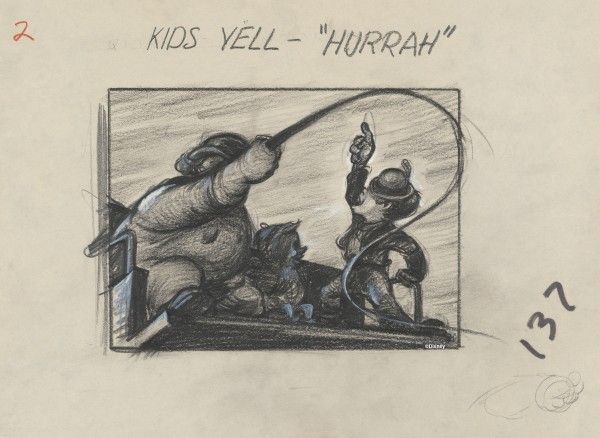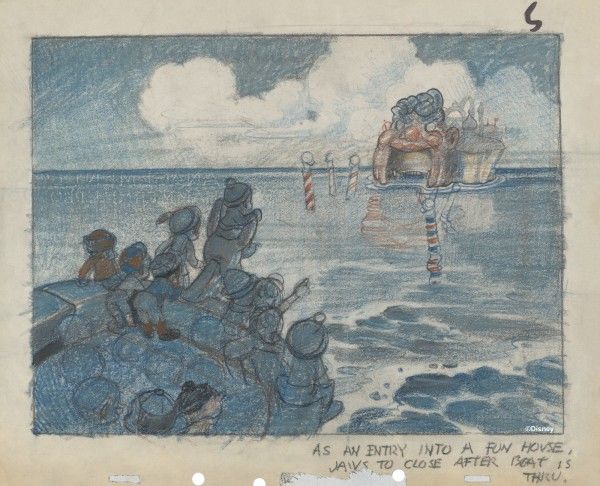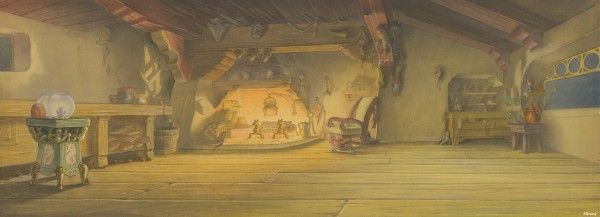Tucked away on a side street in Southern California, not too far from Walt Disney Studios is a nondescript building stacked ceiling-high with more treasures than any Disney, history, or animation nut could imagine. There's nothing fancy about it from the outside. You wouldn't know it if you saw it. But, as any Indiana Jones fan can tell you, sometimes the most unremarkable vessels hold the greatest rewards.
The building is the Animated Research Library, Disney's vast and impeccably maintained collection of all the animated artwork the studio has held on to during the production of their entire animated catalogue. Maintained by by a small, but dedicated team of staff, the Animated Research Library is home to an estimated 65 million pieces of art – each one a piece of film history – comprised of animation tests, concept art, and just about every other kind of in-and out-of-picture artwork you can image from every single animated Disney movie, even the shorts, whether hand-drawn, stop-motion, or computer animated.
The history is everywhere. The lamps hanging in the lobby once hung in the recently remodeled Disney Animation Studios building. The piano in the corner of the lobby, which has been played by likes of Richard Sherman and Alan Menken. You'll also find a desk oddly positioned in the middle of the lobby as a display of remembrance for animator Pres Romanillos, who worked on a number of films including Aladdin, Mulan and The Princess and The Frog, and passed away in 2010. That's all before you even get to the actual vaults.
It's quite literally a treasure trove of art and movie history, and something of a Holy Grail to Disney diehards. The building is not open to the public, except for the rare tour, and its undistinguished exterior is no mistake. Photos are only allowed in the lobby, and if you post them online, the staff is quick to remind you to turn off geotagging. The whole operation is, in effect, off the grid. And there are multiple security checks along the way to ensure it stays that way.
Which is why I was so very lucky to have the opportunity to take a tour of the ARL to celebrate the new Digital HD and Blu-ray release of the Disney animated classic, Pinocchio. The latest title to join the Walt Disney Signature Collection, Pinocchio's latest release is packed with new supplements and bonus features, many of them compiled and collected by the good folks at the ARL.
That task falls into the hands of Fox Carney, the Manager Research at the Animation Research Library, and his staff. According to Carney, putting together the features for a project like this takes about a year and a half of research, reorganizing, photographing and cataloguing between the various departments.
"Our collections team went through every single story sketch that we had, and concept art piece that we had to identify it -- Is it supposed to be with Pinocchio? What scene is it? Then, organize it and do their detective work and figure out what order everything is supposed to be in." Carney explained, "That process took five people between ten and eleven months just to do, of story sketches and visual development. Then there's another three and a half months of cataloguing every single piece of art. And then, probably about another two months of photographing, and then marrying those digital files with those catalogue records."
Everyone at the ARL is dedicated to preserving the history of Disney's animation catalogue, which means the greatest care is taken to preserve the physical art. For one thing, no pens allowed. At all. Once you pass through the doors, it's pencils only. The art is stored in a series of large vaults, twelve in total. For the purposes of my visit, we got to see inside "Walt's Vault", a collection of the artwork from all the animated film's Walt worked on before his death, from Snow White and the Seven Dwarves through The Many Adventures of Winnie the Pooh.
In the pursuit of the best preservation techniques, each vault is climate-controlled for a cool and humid, art-friendly environment and they're equipped with a first-rate inert gas fire suppression system. There's an old-fashioned water option if the gas doesn't do the trick, but raining down water on pieces of carefully preserved art is obviously not ideal. Fortunately, they've never had to use either.
The ARL team is also taking every possible step to ensure Disney's animation legacy will live on as long as possible. In the modern age, that means digital cataloguing. A small team of photographers and quality control are working their way through the vaults, taking ultra high-res images of the art. One of the camera takes such detailed images, it takes two minutes to capture a single piece of art. The payoff is evident in the database, a growing virtual collection of the ARL's assets, photographed in such tremendous detail that a simple zoom reveals exact brush strokes and details far beyond the ability of the human eye.
"You can see how they made the art," says Carney. And Disney's stable of feature artists takes every opportunity to explore that database in search of inspiration and reference. Of course, the animators are welcome to visit the Library itself, but from their work computers, where an internal network grants them to an internet database that can be easily sorted by film, artist, year, and so on.
"One artist who will remain nameless -- Eric Goldberg -- called our image browser 'Facebook for artists'," says Carney with a proud chuckle, "because you'll be looking through it and you'll see something else, then you'll be looking for something else and you'll see something else, and before you know it two or three hours have gone by." The advantage of that access can't be undersold, as the artists can look back at the creation of any moment in any animated film and see how they pulled off their tricks, down to the very brushstroke.
That access is also a remarkable gift for any film historian. Just ask J.B. Kaufman, author and film historian who literally wrote the book on Pinocchio (Pinocchio: The Making of the Disney Epic) and lends that depth of knowledge to the Pinocchio commentary. "Writing a book is basically an excuse to do the research because the research is the fun part," he told me, pointing out the exposure sheets as a particularly useful document to learn from.
As Disney's second animated feature after their groundbreaking debut, Snow White, Pinocchio was a formative step in defining the Disney Animation brand, and Walt had his hands all over it. "He was in it up to his elbows," says Kaufman, "There were some producers in Hollywood who would just sit behind their desk, but not Walt. He was intimately involved in every step of the process."
For Walt, that meant everything from drastically revamping the lead characters to fine-tuning the tone and look of the fantasy worlds they created. For much of the early drafts, Pinocchio was an unlikeable character and Jiminy was barely present, a far cry from the final film we've come to know and love. "One of the main things to discover is all of the story ideas that they cooked up and then didn't use," says Kaufman, "It's kind of amazing how much story material they came up with that isn't in the finished film."
How different could the story have been? Well, it could have been much darker for one thing. Kaufman recalls, "When Geppetto and his pets are inside the whale on the hulk of the old ship and they're fishing, the story that was going to be there … Geppetto and Figueroa were thinking about eating Cleo. In the finished film there's no sign of that, but originally that sequence was going to be much longer and they were so hungry that they were starting to think about the goldfish. And she knew so she was hiding inside the little castle inside the fish bowl." This wasn't a passing whim of an idea either, they got so far with it that there was pencil animation for the sequence, which was later put to use in the short film Figaro and Cleo.
That nicely sums up Disney's approach to their animation artwork -- it's the "Every part of the Buffalo" attitude where each scrap is maintained and respected and thoroughly used for everything it's worth. Sometimes that's research for historians, sometimes it;s inspiration for Disney's artists, and sometimes it's released to the public in doses thanks to carefully curated displays and home video supplements. And it's all happily and safely housed in the walls of the Animation Research Library.Sure, it's all but impossible to get inside, but lucky I was able to bring a little bi of my trip back with me. Below you'll find a teensy tiny morsel of the collection in the form of some Pinocchio backgrounds and concept art. Enjoy!

